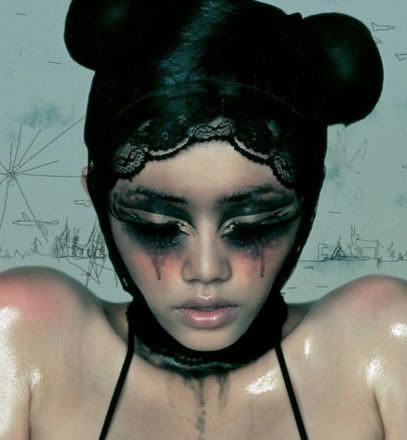Why a tribute to Jim Varney? I'll tell you why, you smarmy prick, because Ernest Scared Stupid and Ernest Goes to Camp were defining films of my childhood. They stand on the pantheon of oddball films that first catered to any semblance of humor I had. I remember in 2000, upon finding out about Jim Varney's death, having a sense of profound loss associated with my childhood and feeling like I could never have quite the same laughs I did as a child. I have a short-list of things that recall childhood memories/sensations, and certain movies incite a pristine memory of care-freeness. These films conjure up that very particular nostalgia, memories that I didn't know I had 'til I play the movies.
So when I thought about Jim Varney, and in my work-induced boredom, read his bio, I felt a deep appreciation for this thespian from Kentucky who carried a goofy, irritating character to its logical extreme. It's a testament for what one human can do for another through art, no matter how trashy or unsophisticated said art is.
Also, it seems that Varney was a forerunner for this type of modern lovable idiot character. Pee Wee, Larry the Cable Guy (how I loathe typing those words), and Mr. Bean all followed this character-type. I think that assessment alone deserves consideration and review of the man's work, no matter how idiotic it may seem to you. I should also say that Scared Stupid was one of my first forays into horror, and there's not a more appropriate film for initiation. I know this is an ironic, sentimental post, but it came very poignantly to me, so there.
"Born June 15, 1949, James Albert Varney, Jr. was an American actor.
Varney began his interest in theater as a teenager, winning state titles in drama competitions while a student at Lafayette High School (which he graduated from with the class of 1968) in Lexington, Kentucky. At the age of 15, he portrayed Ebenezer Scrooge in a local children's theater production, and by 17, he was performing professionally in nightclubs and coffee houses. He listed a former teacher, Thelma Beeler, as being one of the main contributing factors in his becoming an actor.
He was best known for his character Ernest P. Worrell, originally created by Nashville advertising agency Carden and Cherry in the 1980s. The character was used in numerous television commercial campaigns in the following years.
He was also noted for doing commercials for car dealerships across the country, most notably Cerritos Auto Square in Cerritos, California. Another favorite Ernest vehicle was promotions for various TV stations around the nation, including the news team and the weather departments.
He also lent his voice to the character "Slinky Dog" in Disney's Toy Story film series, and to the character "Cookie" Farnsworth, from Atlantis: The Lost Empire, which was released the year after his death.
Varney provided the guest voice for the carny character "Cooder" for "Bart Carny" episode of The Simpsons.
Varney played the prince that Roseanne's sister Jackie started dating near the end of the 90s television series Roseanne.
Varney also played the part of Jed Clampett in the 1993 production of The Beverly Hillbillies. In addition to his Ernest Goes to... series, he starred in several smaller movies for Carden & Cherry such as Ernest P. Worrell's Family Album, Dr. Otto and the Riddle of the Gloom Beam, and Your World as I See It, all of which showcased his great facility with assuming a wide variety of characters and accents. Just prior to his stint as Ernest P. Worrell, Varney was a cast member on the notorious television flop Pink Lady and Jeff.
Jim Varney died of lung cancer on February 10, 2000 at 4:45 a.m. in his home in White House, Tennessee, as the movie Ernest the Pirate neared completion; he was 50 years old." - Lexington Arts Website































_large.jpg)








.jpg)




.jpg)










.jpg)

.jpg)





